The delicious darkness of goth and gothic fashion, a genre that flirts with death, rebellion, and an undercurrent of eroticism so potent, you could choke on it. We’re talking about a blend of aesthetic, music, and mood that’s evolved through the centuries. Let’s start with the roots.
Gothic Fashion & a New Era
Gothic fashion owes its genesis to the gothic era of medieval Europe. Imagine grand cathedrals, pointed arches, religious art, and a general obsession with the macabre. But the fashion was far from dark then, draped in opulent fabrics, it was an elite affair. The essence of this era, though, was the contrast between grandeur and darkness, a dichotomy goth culture later chewed up and spat out. Skip forward to the Victorian era, where mourning fashion got really popular. Black lace, high collars, and corsets screamed both repression and seduction. With death looming over society from plagues and wars, women wore black for years, a high-necked lace gown hiding a viciously corseted figure. This set the tone for the romantic morbidity we see in goth style.
Punk Music & Fashion of the 1970s & ‘80’s
Fast-forward to the 1970s and ‘80s, and the birth of goth as we know it unfolds from the depths of punk. It was punk’s sulky younger sibling, equally rebellious but with an existential bent. Black leather jackets, fishnets, ripped shirts, became part of this gloriously dark subculture.
Siouxsie Sioux, one of the queens of goth rock, gave us style goals, from her wild raven’s nest hair to dramatic eye makeup, all while pairing it with fetish gear like latex gloves or tight vinyl. The crossover with goth fashion took hold during the 1980s when aesthetics started dripping into club culture. Latex, PVC-vinyl, and leather became the materials of choice, molded to the body in a sensual embrace of rebellion and sexual freedom. Corsets, high boots, collars, and leashes strutted their way into goth clubs, adding a layer of power-play to the already dark, brooding vibe.
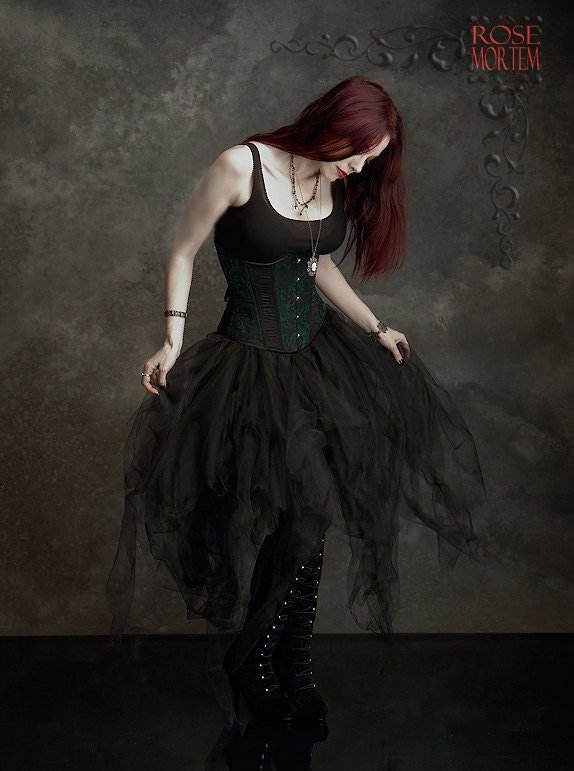
Industrial Gothic Fashion in the 1990s
This all morphed into the ‘90s, where the boundaries blurred further with industrial and cybergoth influences—think Matrix-style PVC and cyber-fetish wear, chains, goggles, and the occasional neon touch, though classic goths would sneer. Which didn’t just inspire fashion but was a lifestyle Fetish, it became a power statement. Corsets, once a tool of oppression, now constrict the willing. Leather and latex turn wearers into gods of their own narrative.
Today, goth fashions evolved into a multifaceted beast, from Victorian goths in their decadent lace to fetish goths donning latex bodysuits and sky-high stiletto boots, oozing power. Modern goths flirt between historical romance and brutal futuristic fantasies, mixing and matching Victorian restraint with industrial ferocity.
Fashion designers like Alexander McQueen and Rick Owens took these subcultural threads and wove them into high fashion, giving the goth and fetish aesthetic a global stage. In essence? Goth and fetish gear walk hand-in-hand through the shadows. Their evolution has been a deliciously slow seduction, culminating in a look that is both powerful and sensual, with death, and rebellion. And trust me, it’s not done evolving yet.
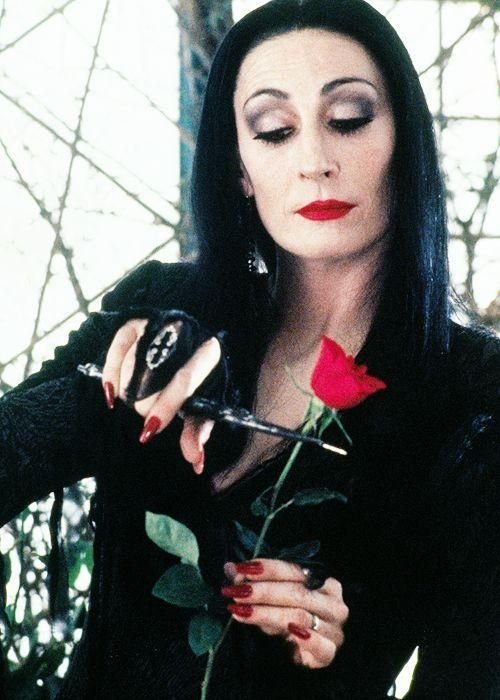
Morticia Addams
Morticia Addams: The matriarch of macabre and the starting point for all things dark, Morticia is gothic sensuality in the flesh. Her long, flowing black gown, raven hair, and blood-red lips? Sublime. She’s a woman who embodies timeless beauty with a penchant for the eerie. Morticia didn’t wear fetish gear, but her mere presence made you want to bend the knee. She taught us that darkness can be seductive, that elegance and morbidity are the sexiest of bedfellows.
Siouxsie Sioux
And you can bet she set the stage for future goth icons to drape themselves in black silk and corsets. Siouxsie Sioux: The punky, rebellious love child of Morticia and a new wave of goth anarchy. Siouxsie was the one who really dragged goth from the Victorian funeral into the modern world with a snarl and some fishnets. Lead singer of Siouxsie and the Banshees, she fused goth music and fashion into an intoxicating brew.
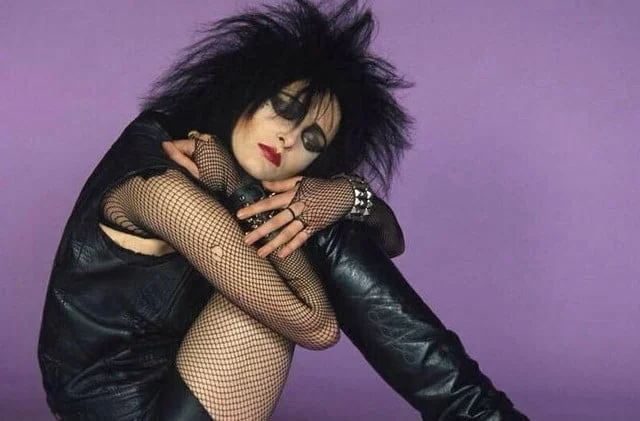
Her wild black hair, dramatic eye makeup, and torn, fetish-inspired outfits made her the punk-goth queen of the 80s. Siouxsie didn’t just wear leather and latex for fun, it was armor. She gave the gothic scene that perfect mix of vulnerability and lethal danger.
Elvira Mistress of the Dark
Elvira, Mistress of the Dark: If Morticia was the elegant gothic queen, Elvira was the campy goth bombshell who wrapped death in humor and leather. With her plunging neckline, exaggerated black beehive, and skin-tight dresses, Elvira made goth sexy and fun. She leaned heavily into the rocking corsets, fishnets, and leather, but all with a wicked smile that said, “I’m here to kill, and I look damn good doing it.”
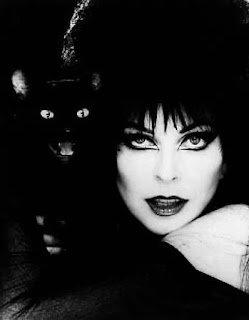
The Cure with Robert Smith
Robert Smith, the Cure’s frontman is an androgynous god of the goth scene, his smudged lipstick and messy black hair becoming a gender-bending icon. Robert taught the world that goth wasn’t just for the women, making eyeliner, teased hair, and an air of sorrow mandatory for any goth god in the making. His black suits and morbid lyrics turned misery into a look, and for that, we can’t forget him.
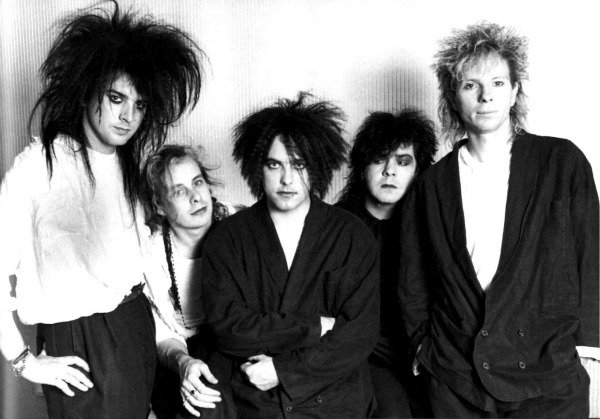
Pauley Perrette as Abby Scuito
Pauley Perrette as Abby Sciuto—the adorable, perky yet deeply dark gothic queen of forensic science. She took goth fashion out of the underground and into the mainstream, but with her own twist. Abby is a delightful contradiction: a hyper-intelligent, caffeine-addicted forensic scientist, covered in tattoos, but also with this warm, endearing personality that defies the stereotypical “dark and brooding” goth vibe. Her style? Pure cyberpunk goth meets fetish-lite with a sprinkle of quirky cuteness. Abby’s look was always black-centric, of course, goth rule number one, but she mixed in industrial elements and accessories like collars, dog tags, chain necklaces, and fishnets.
Her signature pigtails became as iconic as her black lipstick and plaid skirts, creating a contrast between the “cute” and the “dark.”
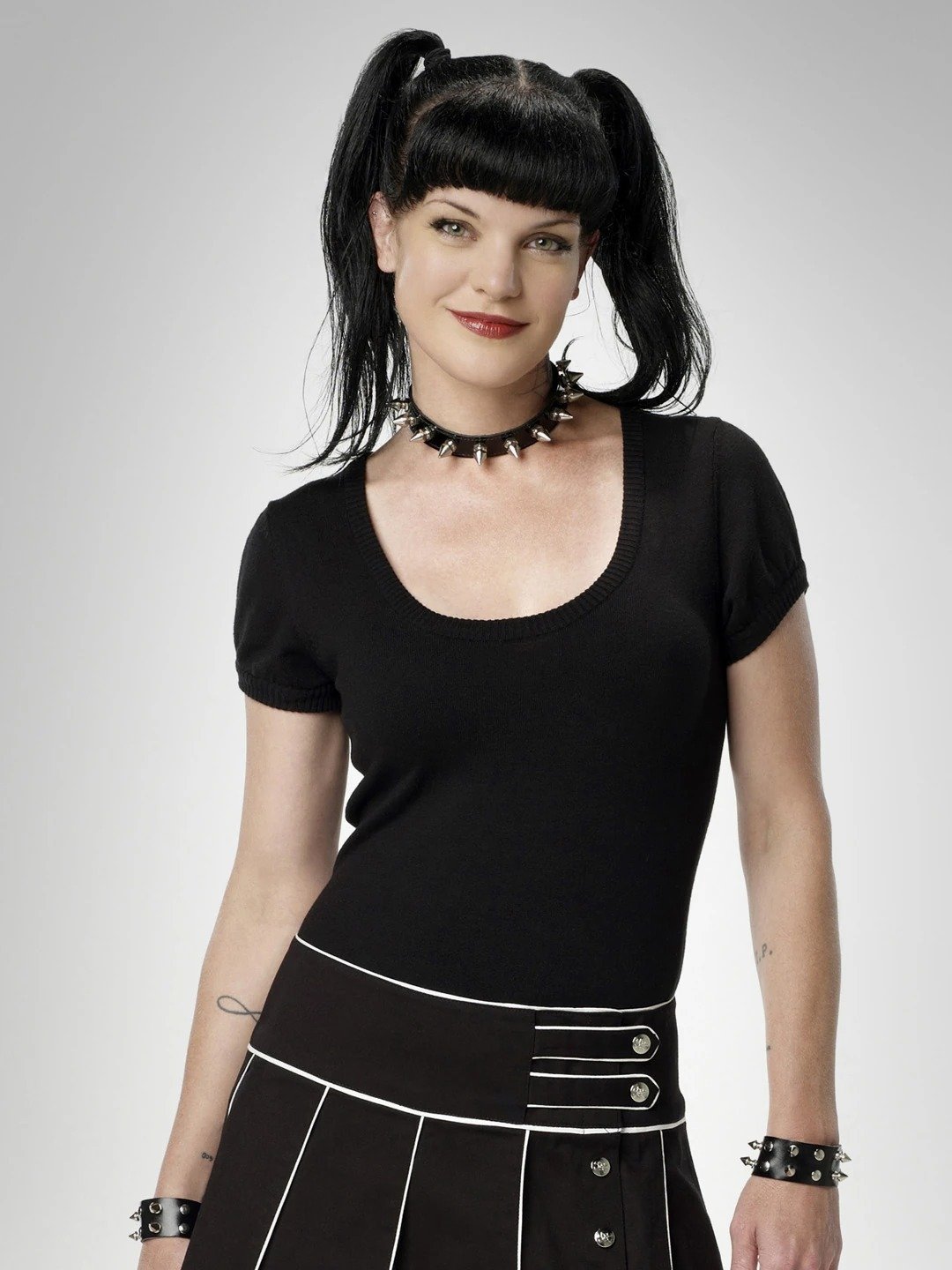
While Abby rocked platform boots, spiked bracelets, and occasionally even corsets or other adjacent gear, she did it in a way that screamed individualism rather than sensual rebellion. Her character brought a softer side to goth, showing that you can be quirky, bubbly, and love cute things, all while maintaining a dark and edgy.
Marilyn Manson
Marilyn Manson: Love him or hate him, Manson took goth and fetish to an entirely new level in the late ‘90s and early 2000s, fusing industrial, goth, and glam into a shocking display. His iconic use of leather, latex, makeup, and corsets was a middle finger to societal norms, marrying fashion with a level of raw shock that pulled goth culture into the mainstream. And beneath all those theatrics? Pure gothic attitude, with an edge that echoed through subcultures worldwide.
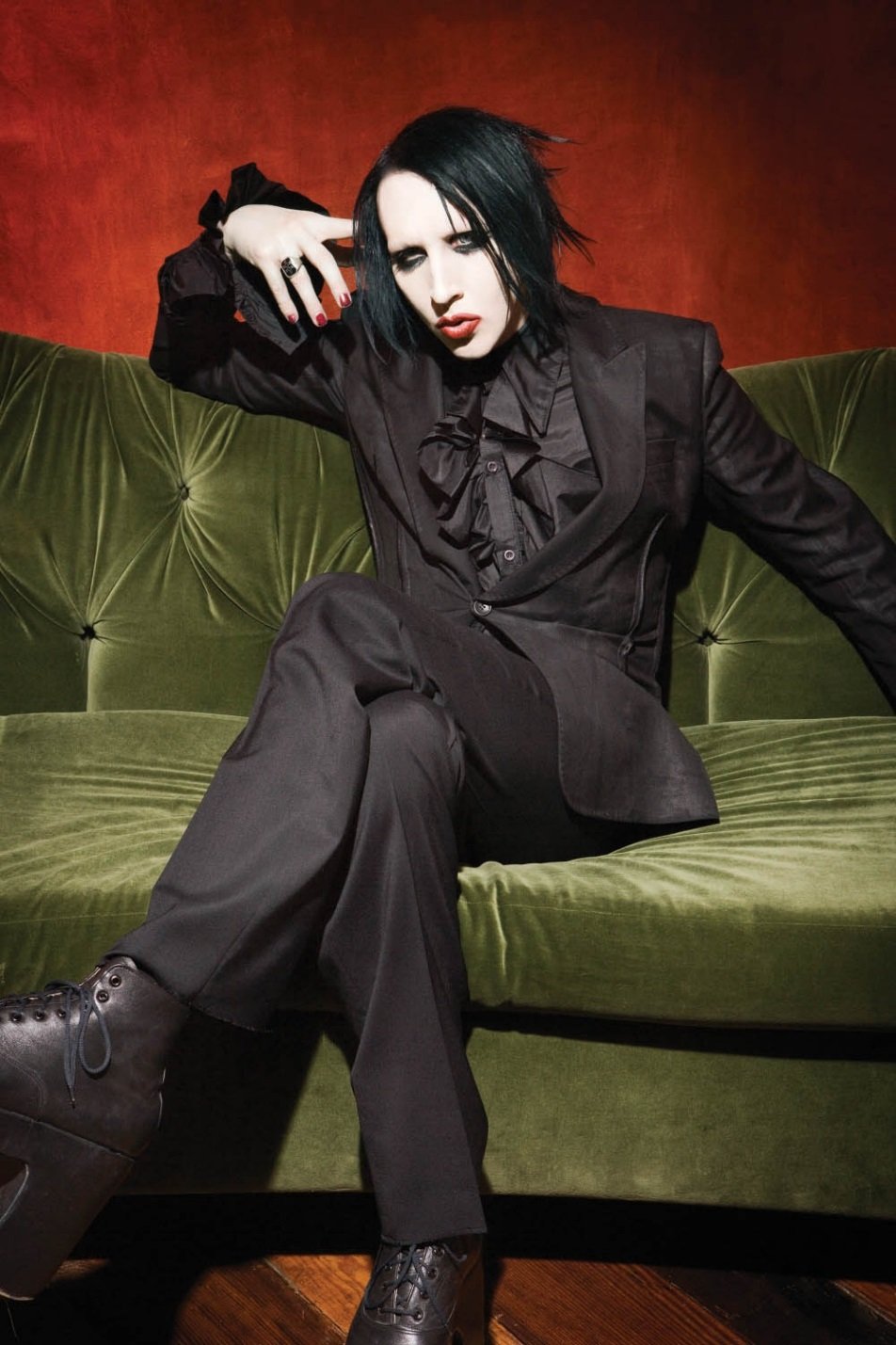
Dani Divine Modern Goth Model
Dani Divine: Now, we arrive at the modern era, where Dani Divine reigns as one of the queens of goth. A fiery, red-haired model and performer, Dani is the embodiment of goth’s marriage to latex, leather, corsets, and sky-high stilettos are her everyday uniform. She has that allure of power, sexuality, and that intoxicating allure of someone who thrives in the shadows. Her performances blur the line between sensuality and danger, while remaining deeply rooted in the goth.
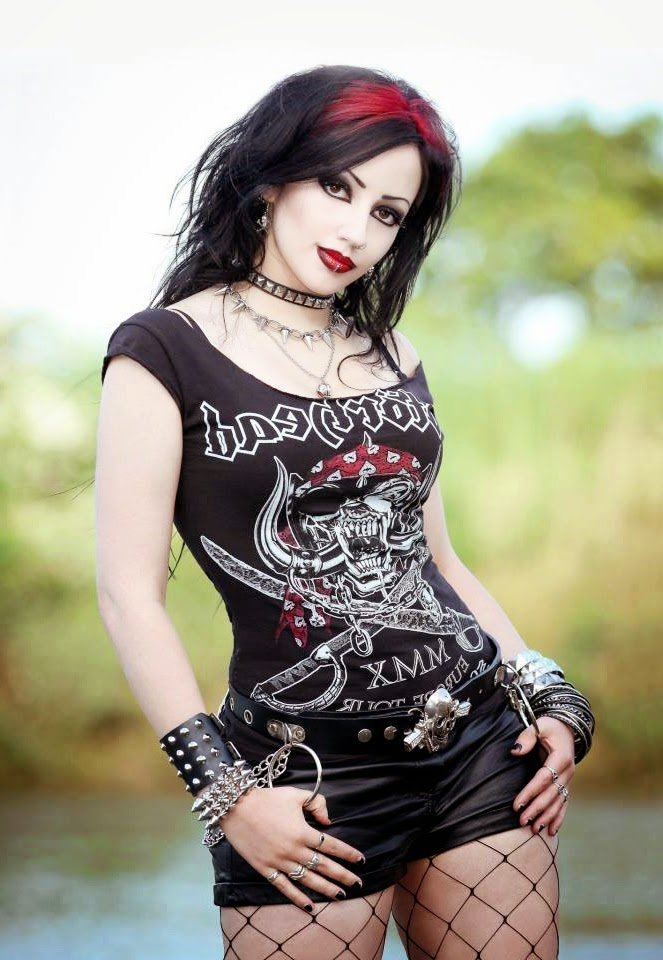
Dani is the bridge between old-school goth and the new wave of cyber, industrial, and fetish fashion. She brings that Siouxsie Sioux edge with a Morticia Addams poise, but with a level of latex-clad fierceness that’s pure modern goth royalty.
In Between these divas of darkness? X
So many wild, dark souls have left their imprint: from Theda Bara, the silent film vamp who wrapped herself in Egyptian goth glam, to Faith and the Muse’s Monica Richards who brought ethereal goth into the mix. Amy Lee of Evanescence brought the operatic, Victorian mourning vibe back into the mainstream in the early 2000s, giving goth girls everywhere their anthem.
In short, this is an evolution that’s gone from mysterious black veils and seductive glances to fishnets and leather boots. From Morticia’s restrained, gothic elegance to Dani Divine’s latex-draped dominatrix vibe, every icon between has brought their own flavor of darkness, keeping the candle-lit path of goth alive and kicking.
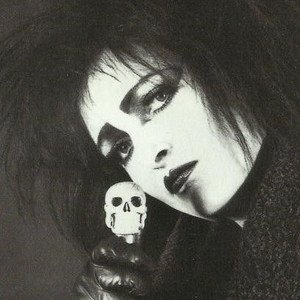
The Early Days: Post-Punk Birth of Goth Fashion (Late 1970s – 1980s)
Goth fashion as we know it emerged from the punk rock rebellion of the late 1970s and early 1980s. Bands like Siouxsie and the Banshees, The Cure, and Bauhaus gave birth to the scene, and with it, a dark sense of style.
Vivienne Westwood: Westwood is often considered the godmother of punk fashion, and though not a goth designer in the strict sense, her punk influence on goth fashion is undeniable. She brought goth fashion into the public eye, think leather, chains, and studs, and inspired the DIY ethos of early goth fashion. Her pants, deconstructed pieces, and use of PVC and latex bled directly into the darker elements of goth.
Judy Blame: Another critical figure in early goth fashion, Judy Blame was a punk stylist and designer who pioneered the use of found objects, chains, and pins in clothing and accessories. His chaotic, morbid aesthetic influenced how goths accessorized, especially in the 1980s, with layers of chains, crosses, and Victorian-inspired jewelry.
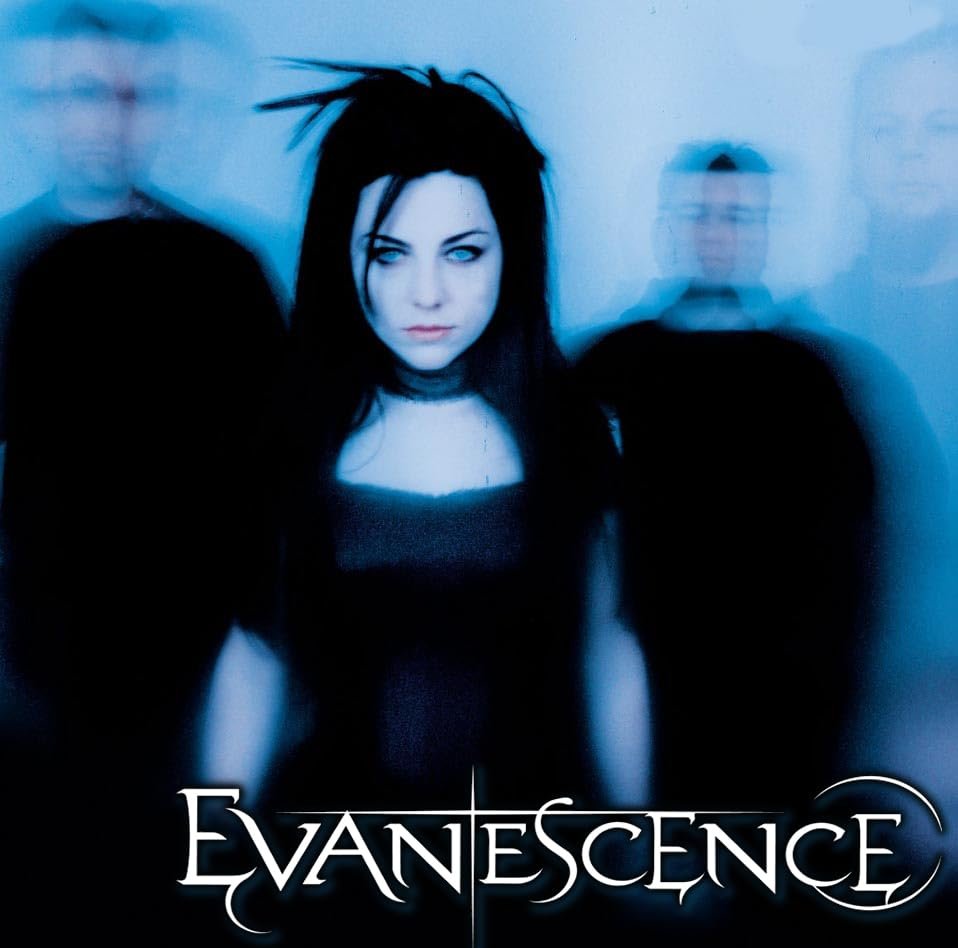
The Evolution: 1980s and 1990s
The 1980s saw gothic fashion grow legs beyond just music and lifestyle, it started influencing avant-garde designers and spreading internationally.
Stephen Sprouse: A designer who blended punk and goth aesthetics into high fashion, Sprouse used neon, graffiti, and New Wave inspiration but always kept that dark, rebellious edge. His designs flirted with gothic glam and pushed the boundaries of high fashion into goth-adjacent territory.
Gianni Versace: Versace’s contributions to goth fashion came in the late 1980s and early 1990s. Though more known for his bright and glamorous looks, Versace also toyed with fetish elements—black leather, bondage, chains, and studded pieces—which filtered into the mainstream fashion world. His boldness brought the goth edge to a broader audience, making black lace and leather high fashion.
Alexander McQueen: McQueen is a towering figure when it comes to gothic fashion’s influence. Emerging in the ‘90’s he introduced dark romance into his collections, playing with themes of death, decay, and morbidity. His Victorian-inspired silhouettes, penchant for black lace, and dramatic, sometimes morbid runway shows encapsulated the true goth spirit—sensual, deadly, and profoundly beautiful. He took fetish gear like corsets, leather, and bondage elements and injected them with an almost aristocratic elegance, making them art.
![The Crow' Reboot Back in Development [Exclusive] - Bloody Disgusting](https://aoidemagazine.com/wp-content/uploads/2025/07/the-crow-reboot-back-in-development-exclusive-.jpeg)
The Crow movie
Jean-Paul Gaultier: Known for his boundary-pushing work, Gaultier frequently drew on gothic elements in his collections, embracing corsetry, lace, and leather. His use of fetish-inspired gear (think the famous Madonna cone bra) and dramatic black fabrics placed him firmly in the realm of goth-inspired fashion.
Modern Era: 2000s to Now
Goth fashion has continued to evolve in the 21st century, blending with industrial, cyber, and fetish culture, influencing everything from runway collections to underground subcultures.
Rick Owens: Known for his avant-garde, darkly dystopian aesthetic, Rick Owens is a staple in modern goth fashion. His use of monochrome palettes, long flowing silhouettes, and experimental leather designs make him a god of the gothic-industrial world. Owens’ collections evoke a post-apocalyptic wasteland, drawing on ancient, brutalist design and modern minimalism while still holding that edge of gothic sensuality.
Gareth Pugh: Pugh’s work embodies the avant-garde gothic spirit. His collections often feature black leather, PVC, and highly architectural designs that evoke both gothic and futuristic elements. Pugh plays with silhouettes that can be downright disturbing, creating a vision of high goth that feels both ethereal and utterly menacing.
Demitrius (Deme) Ioannou (Ader Error): Known for his ability to craft pieces that mix avant-garde goth with streetwear elements, Ioannou’s designs feature deconstruction, dramatic layers, and high-contrast fabrics. His work is often rooted in the dark, moody atmospheres that call to gothic influences but with an added modern twist.
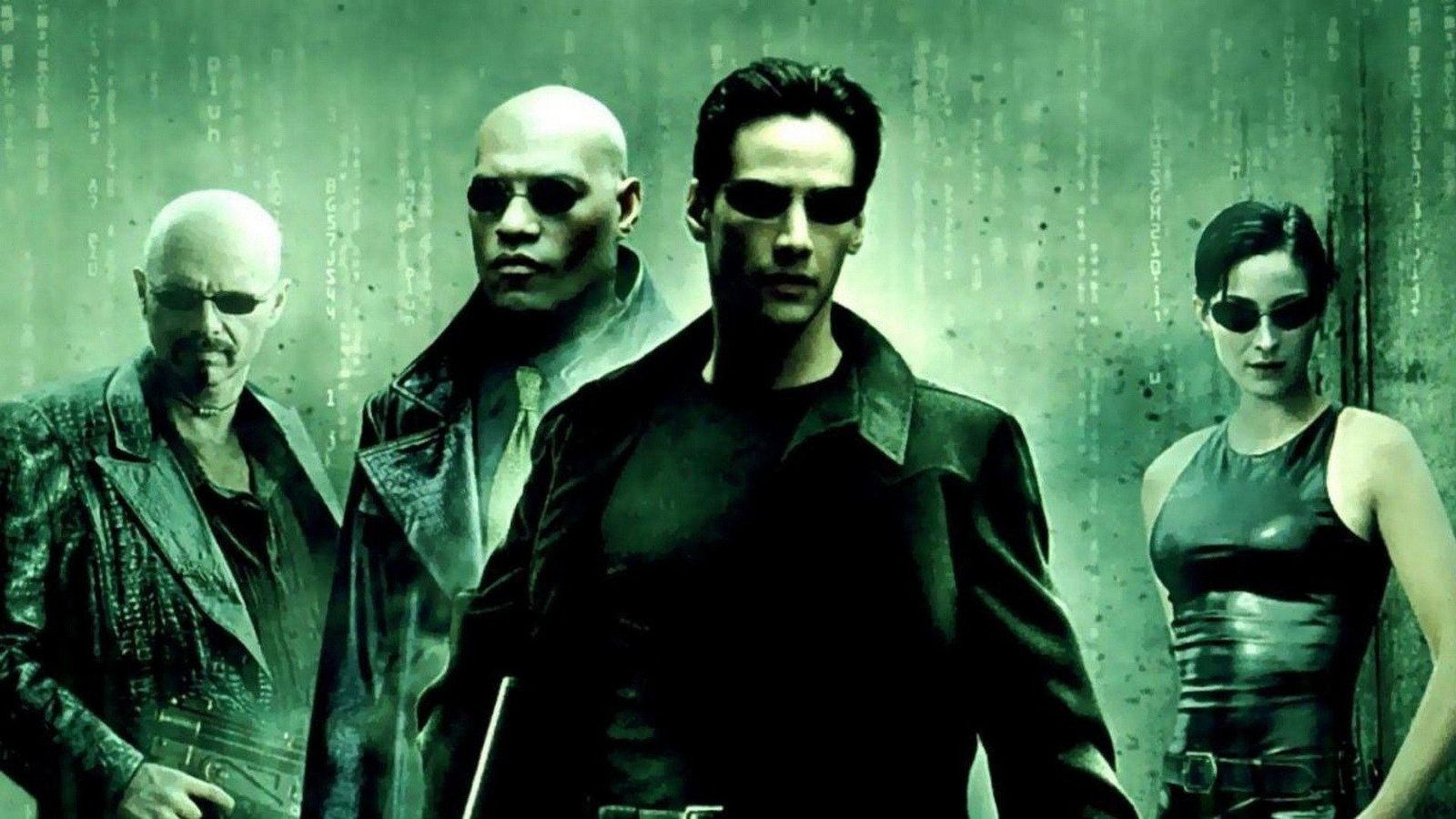
Matrix movie
The Gothic Fashion Industry
The gothic fashion industry, a shadowy, beautiful beast that’s lurked on the fringes of mainstream fashion, only to come creeping into the limelight thanks to some daring, dark-hearted designers. This world is more than just clothes; it’s an ethos, an embodiment of rebellion, sensuality, and a flirtation with death. From early trailblazers to modern-day provocateurs, these designers have sculpted the gothic aesthetic into a powerful subculture and even influenced haute couture.
Underground Designers and Goth Brands
While haute couture has certainly embraced goth fashion, the goth subculture thrives on its own designers, who create for the scene itself:
Killstar: One of the leading brands in today’s goth and alt-fashion, Killstar blends goth, punk, and fetish elements, producing clothes that range from casual goth to elaborate fetish-wear. Their designs embrace occult themes, Victorian lace, and fetish-style silhouettes, making them a go-to for today’s goth community.
Lip Service: A pioneer in alternative fashion since the 1980s, Lip Service was known for blending punk, goth, and fetish aesthetics. Tight vinyl, bondage-style pants, corsets, and outrageous accessories made them a household name in goth and fetish scenes for decades. Their designs carried that underground, rebellious spirit, and though they’ve faded in popularity in recent years, they helped pave the way for modern alt-brands.
The Dark Angel: A brand known for crafting Victorian gothic fashion with corsets, lace, and luxurious black fabrics, The Dark Angel specializes in bringing that romantic, historical to modern goths. Their designs harken back to the opulence of the Victorian era but with a distinctly modern goth twist.
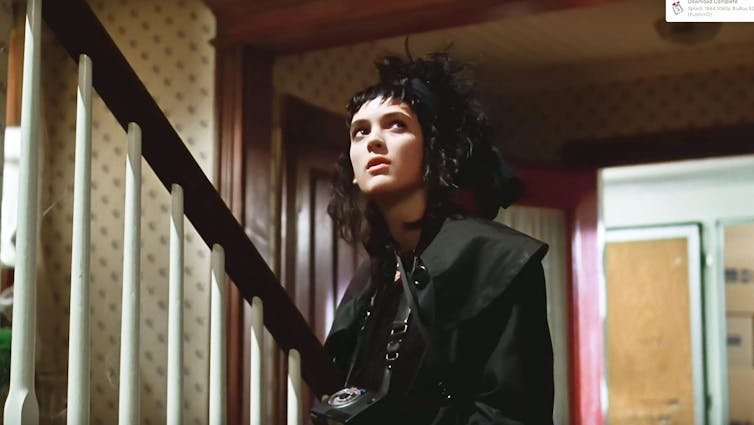
Beetlejuice movie
The Influence Today
Gothic fashion’s influence on modern culture has only grown, its imagery often reappears in pop culture, from the runways of Paris to the wardrobes of your favorite rock stars and influencers. Celebrities like Billie Eilish, FKA Twigs, and Lady Gaga have borrowed from the aesthetic, merging it with both high fashion and street style. Even brands like Gucci under Alessandro Michele have flirted with goth through their use of dark romanticism and macabre motifs.
From the dark underground of punk to the highest echelons of fashion, gothic fashion has been this constant, brooding presence, always there, always seductive, and never far from the cutting edge. Hot Topic, the gateway drug to all thing’s goth, punk, and alt, wrapped up in a suburban mall storefront. In the 90s, it was practically a rite of passage for anyone dipping their toes into the waters of goth rock chic. If you were an angsty teenager yearning for black eyeliner, band tees, and spiked chokers, Hot Topic was your mothership. But its rise also marked the moment when goth fashion, which had been lurking in the underground, started to bleed into the mainstream.
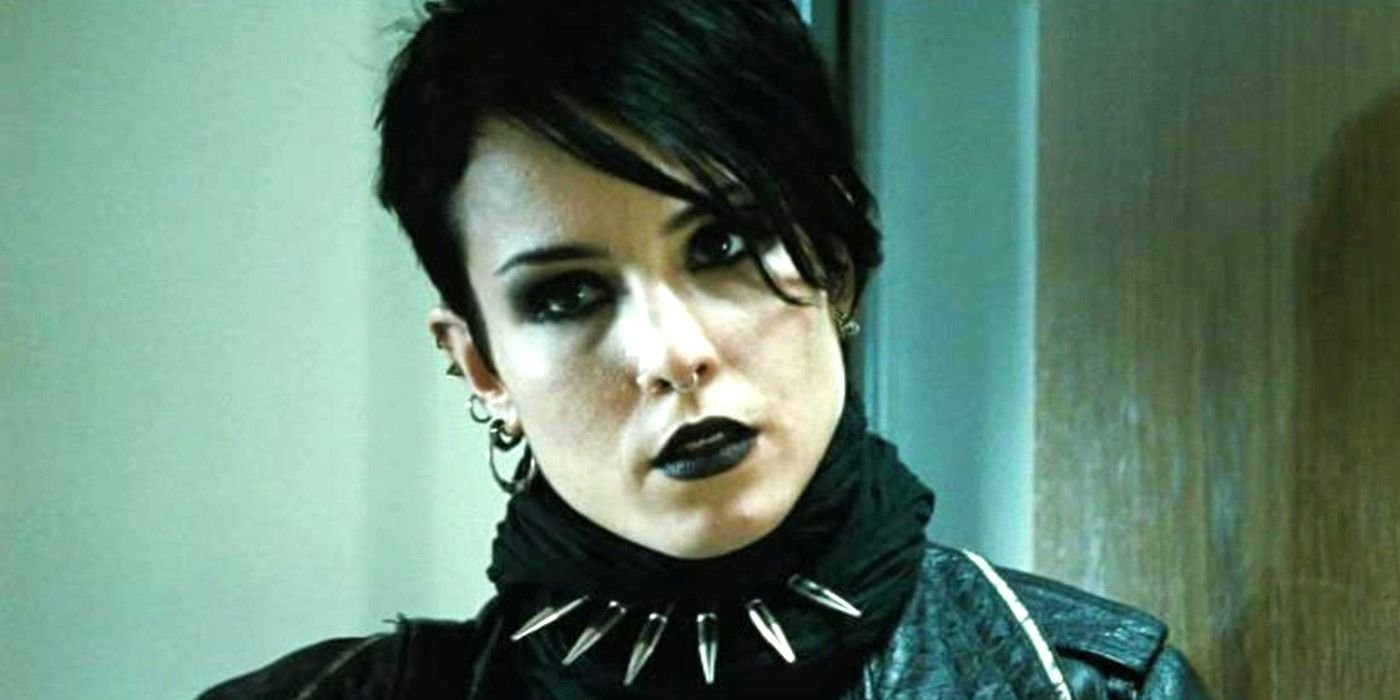
Girl With the Dragon Tattoo movie (Swedish)
The 90s Goth Rock Explosion
The 90s were a hotbed for goth music’s second wave. Bands like Marilyn Manson, Nine Inch Nails, Type O Negative, and The Sisters of Mercy dominated the darker side of the music scene, while The Cure and Bauhaus laid the groundwork a decade earlier. Goth music wasn’t just music—it was a lifestyle, and that lifestyle had a look. The “goth rock chic” aesthetic that emerged during the 90s blended brooding Victorian influences, fetish gear, and punk-inspired DIY fashion, all accessorized with a heavy dose of black leather and eyeliner.
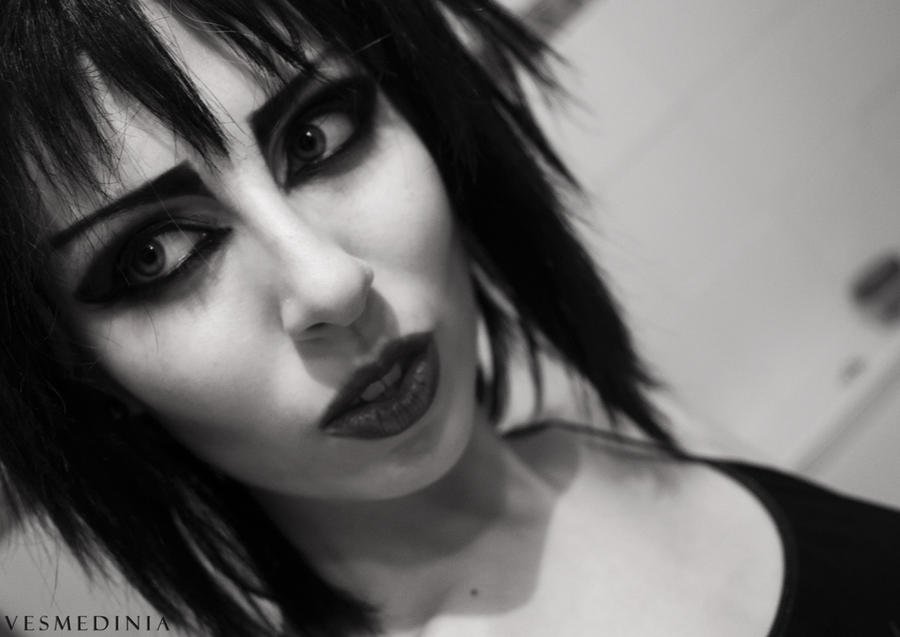
The Influence on Fashion and Pop Culture
Hot Topic wasn’t just a store—it was an access point for the goth aesthetic to penetrate mainstream culture. Before long, celebrities and fashion houses began picking up on the goth rock look: Goth elements in high fashion started to emerge, especially as designers like Alexander McQueen and Rick Owens flirted with goth-inspired collections.
Movies like The Crow and The Matrix helped solidify the goth aesthetic in mainstream media, with their characters donning trench coats, leather, and combat boots—all available at Hot Topic, naturally. Pop stars like Billie Eilish with her oversized, alt-gothic looks, perpetuated this mainstream goth in music, feeding off what stores like Hot Topic helped nurture.
Gothic Revival and Architecture-Inspired Fashion
The Victorian era also birthed the Gothic Revival, an architectural movement dripping in pointed arches, spires, and a general worship of gloom. Modern fetish goths pay homage to these architectural shapes through structured clothing, sometimes resembling the sharp, jagged lines of gothic cathedrals. Think shoulder pads, sharp angles, and exaggerated silhouettes that suggest a commanding, almost architectural presence.
In short, Victorian elements are alive and thriving in modern fetish goth, weaving together that sense of repression, sensuality, and control with dark, fetishistic power. It’s a look that suggests both historical elegance and deviant rebellion, making every lace-covered, leather-bound soul who embraces it a living work of seductive, danger.
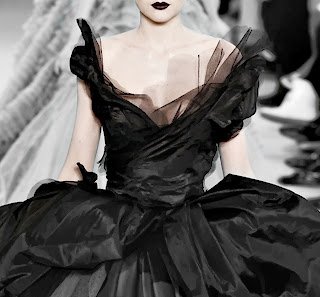
Legacy of Hot Topic and ‘90s Goth Rock Chic
By the late 2000s, the explosion of emo and scene culture absorbed much of the market Hot Topic once catered to. Still, the store remains a fixture in malls, carrying the torch for goth, punk, and alternative fashion into the next generation. Its legacy? It took the underground and made it accessible, for better or worse, helping to mainstream the goth rock chic look and ensuring that goth fashion would never die out entirely, it would simply evolve and regenerate in new, sometimes more palatable forms. Goth, that subculture turned counter-revolution, birthing an empire of dark idols, rock gods, cinematic sirens, and untouchable sex icons. It seduced the mainstream without ever shedding its midnight allure. What began as a rebellion, rooted in disillusionment and a flirtation with the macabre—has become eternal, endlessly reinventing itself with every generation that dares to embrace its shadowy embrace.
Before the post-punk era ever whispered its first melancholic note, icons of darkness were already haunting the screen. The legendary Morticia Addams, the original Gothic matriarch, set the stage with her smoldering elegance, wrapped in shadowy silk, dripping with dangerous charm. Long before goth became a movement, Morticia exuded the perfect balance between sensuality and mystique, her sly wit as sharp as any blade. And let us not forget Bettie Page, the eternal pin-up queen, with her jet-black hair and unapologetic dominance, showing us all how goth fashion, could be wrapped in a bow of elegance and sheer, untouchable beauty.
Then came the rebellion of the ’70s and ’80s. Out of punk’s ashes rose the goth gods, figures who didn’t just flirt with darkness but made love to it. Siouxsie Sioux, with her birdlike grace and kohl-rimmed eyes, and Robert Smith, forever a vision of tousled hair and smeared lipstick, became the tragic muses of an era. Trent Reznor whispered agony into industrial beats, while Marilyn Manson took it one step further, embodying the grotesque beauty of the forbidden, his every look dripping with dark defiance.
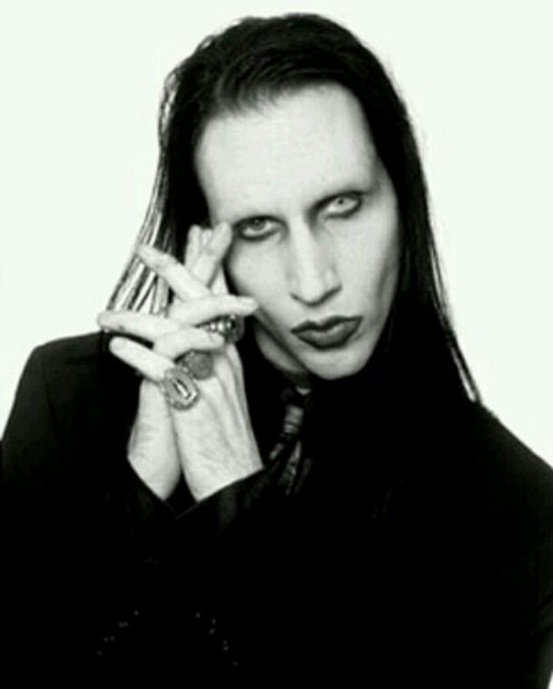
As a result, by the early 2000s, Hot Topic became more synonymous with emo and mall goths, those who embraced the aesthetic but didn’t necessarily understand its roots. Goth rock chic had merged with other subcultures like emo, nu-metal, and industrial, diluting some of the initial purism but expanding its reach dramatically.
But goth wasn’t merely about music; it was about philosophy, about romanticizing decay while lusting after the eternal. The fetish elements, corsets, collars, latex, and lace, pulled from an older, more erotic undercurrent, creating a look that would make Dita Von Teese the modern queen of burlesque, and later, goth-fetish icons like Dani Divine ruled the underground. The blend of power, submission, and raw sensuality wasn’t just a visual delight, it was a declaration, that the dark could be beautiful, that restraint could be freedom.
And yet, even as it slinked into the mainstream, courtesy of MTV, Hot Topic, and the blending of goth with emo and industrial, the essence of goth remained untouched. High fashion, too, took note. The likes of Alexander McQueen and Jean-Paul Gaultier dragged goth chic onto the runway, all while Rick Owens cloaked his models in dystopian leather dreams, blending couture with the subculture’s essence of otherworldly elegance. Lace and corsets became the new trend, yet even in these exalted circles, goth never lost its heart: mournful, seductive, and defiantly untouchable.
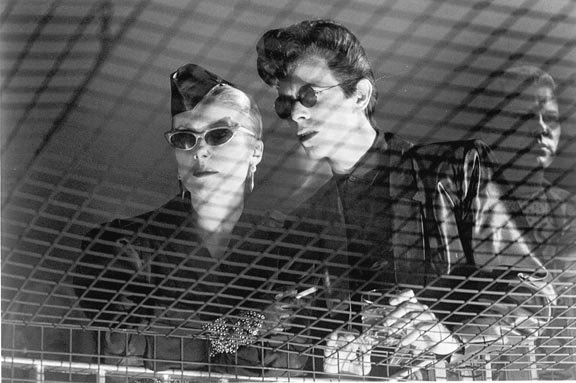
The Hunger movie
So, what is goth, after all these years? It’s the paradox that continues to breathe, a subculture that refuses to die while constantly shedding its skin. It is a haven for the outcasts, for those who crave a little danger with their beauty, a little darkness in their light. Goth isn’t just a look, it’s a lifestyle, an unapologetic attitude to societal norms. It’s the ultimate counter-revolution, one that gave us dark idols, rock gods, silver-screen sirens, and goth icons. And as long as there are shadows, goth will thrive there, eternal, seductive, and gloriously defiant.
Addendum: Goth Fashion Movies
- The Hunger, 1983, Catherine Deneuve, David Bowie, Susan Sarandon
- Gothic, 1986, Gabriel Byrne, Julian Sands, Natasha Richardson
- Labyrinth, 1986, David Bowie, Jennifer Connelly
- Beetlejuice, 1988, Michael Keaton, Winona Ryder
- Edward Scissorhands, 1990, Johnny Depp, Winona Ryder
- The Addams Family, 1991, Anjelica Huston, Raul Julia, Christina Ricci
- Bram Stoker’s Dracula, 1992, Gary Oldman, Winona Ryder, Anthony Hopkins
- The Crow, 1994, Brandon Lee
- Interview With a Vampire, 1994, Tom Cruise, Brad Pitt
- The Craft, 1996, Neve Campbell, Fairuza Balk
- Blade, 1998, Wesley Snipes
- Dark City, 1998, Rufus Sewell, Keifer Sutherland, Jennifer Connelly
- Matrix, 1999, Keenu Reeves, Carrie Ann Moss, Laurence Fishburn
- Sleepy Hollow, 1999, Johnny Depp, Christina Ricci
- The Cell, 2000, Jennifer Lopez, Vince Vaughn
- From Hell, 2001, Johhny Depp, Heather Graham
- Underworld, 2003, Kate Beckinsale
- Girl With the Dragon Tattoo, 2009, (Swedish), Noomi Rapace, Michael Nyqvist
- The Raven, 2012, John Cusack, Luke Evan
- Crimson Peak, 2015, Mia Wassikowsky, Tom Hiddleston



